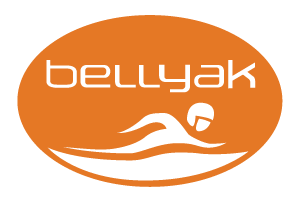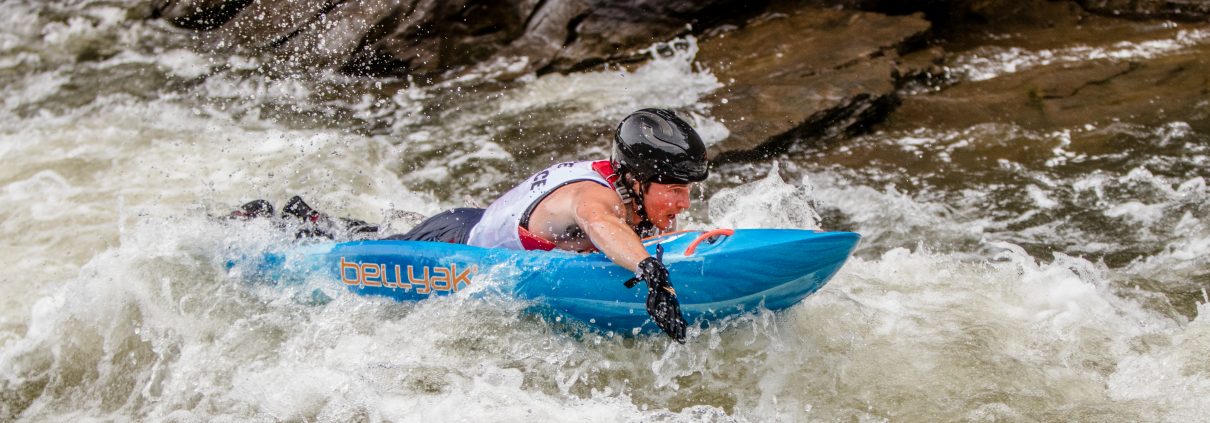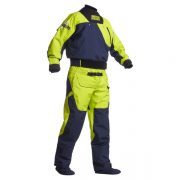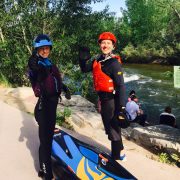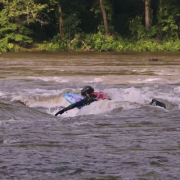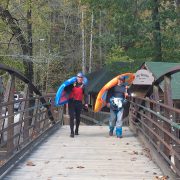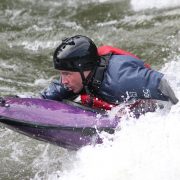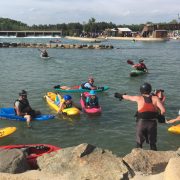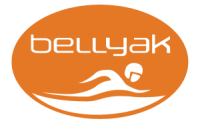Bellyaks vs Prone Paddle Boards
Moving across a body of water under your own power is a wonderful feeling. Combining the motion of swimming with the speed and glide of a boat/board is what prone paddling is all about. But why lay down and use your hands when you can sit, stand or kneel and use a paddle? Read on.
There is an undeniable purity of experience that occurs when you reduce your gear down to a board/bellyak and just your hands for propulsion. The ability to feel every current throughout your entire body provides a connection to the water not provided by any other watercraft. Both Prone Paddle Boards and bellyaks combine the intuitive nature of swimming with a boat/board designed that interacts with the environment. Long story short? It makes going prone the purest of all paddlesports.
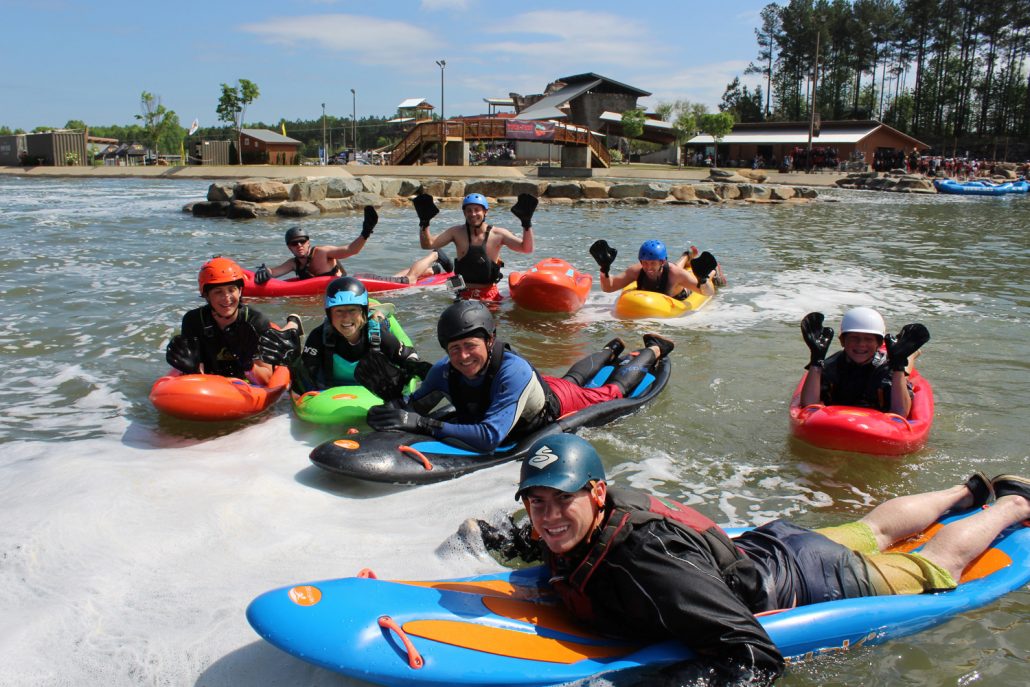
Gaggle of Bellyaks
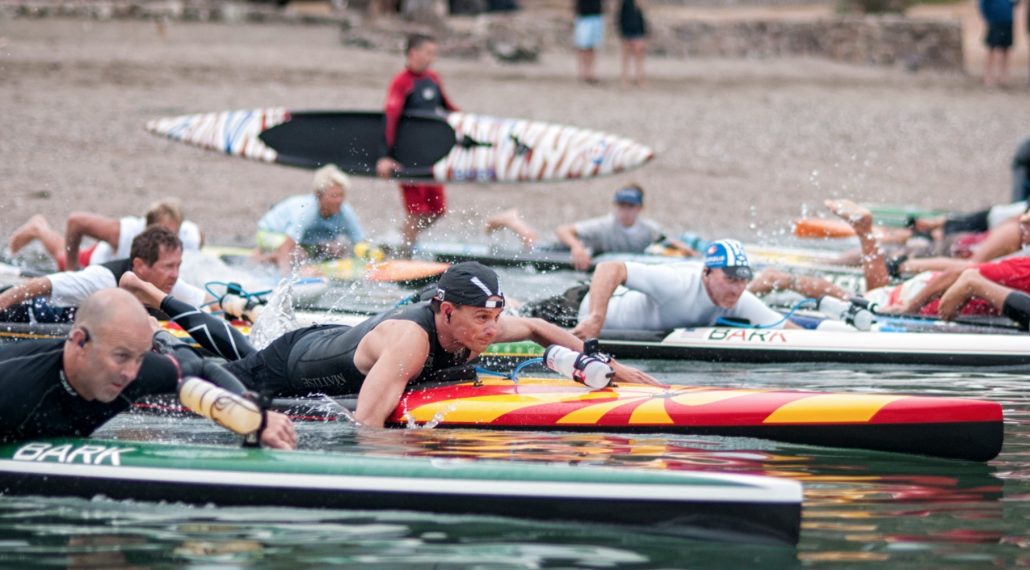
Pack of Prone Racers
History and Design
At first glance, bellyak’s and traditional prone paddleboards look similar. Both are human powered aquatic vehicles designed for paddling prone. But, there are a few minor details.
- Prone paddleboards were born on the coast – for ocean use – using the construction techniques and design principles of surfboard manufacturing.
- The boards are long and narrow, designed for efficiency and speed.
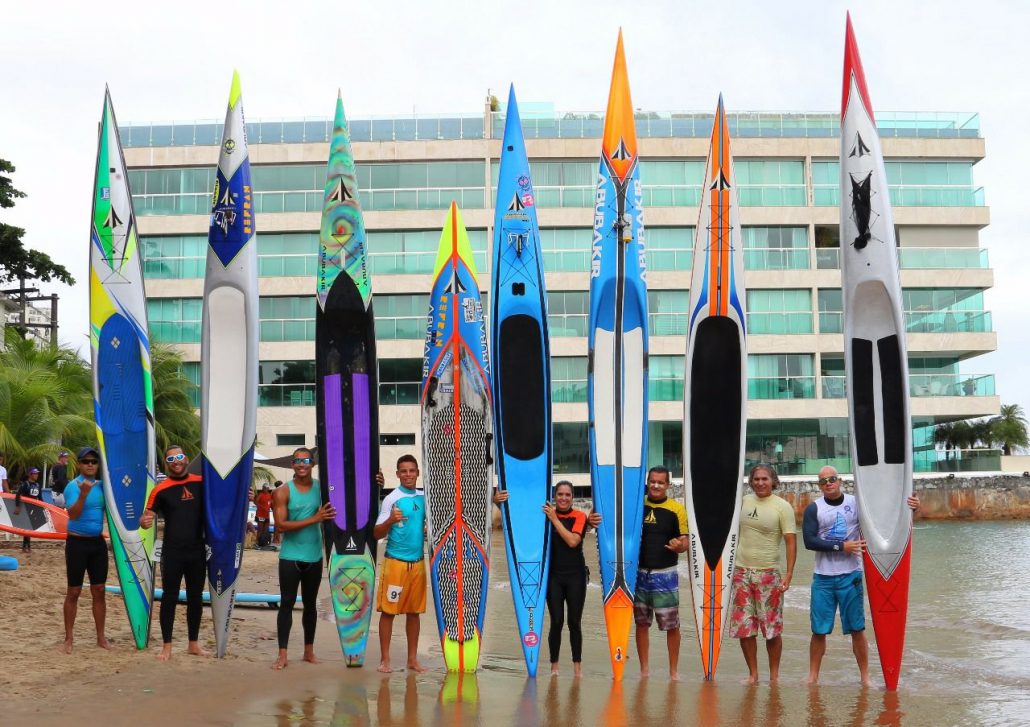
Either the people are really short or their boards are really long
- Bellyaks evolved inland, in the mountains of Western North Carolina, for paddling whitewater.
- Bellyaks use the construction techniques and design principles of modern kayak manufacturing to create the worlds first prone kayak – or ‘lay on top’ kayak. Bellyak has patented the ‘body to boat’ interface and specific design features that differentiate it from a prone paddleboard.
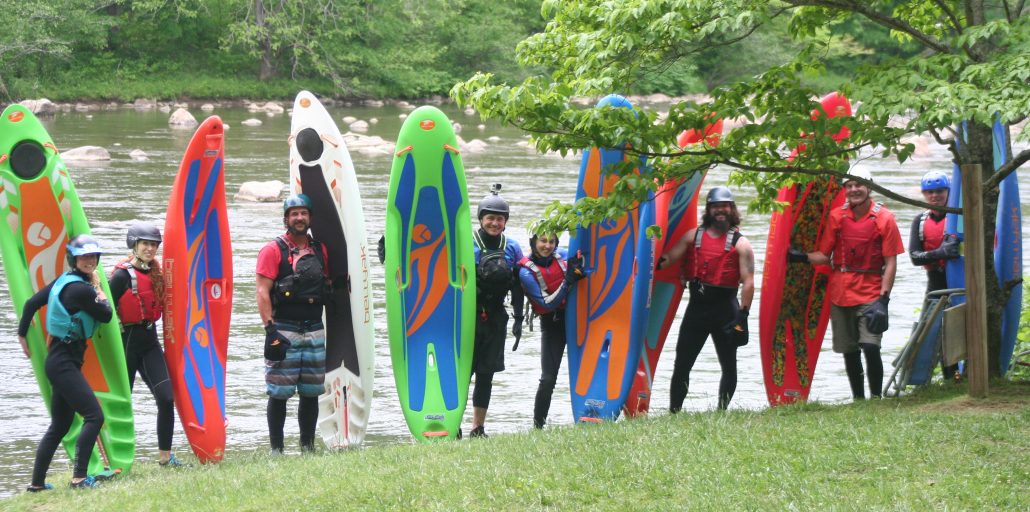
Bellyakers are really tall
Design Differences


Bark Commander Top and Side View
Prone boards evolved from surfboards and designs were made to be as fast and efficient in the water as possible. This led to long, narrow boards that have a rounded (displacement) hull for maximum speed and glide. Some prone boards have a very slightly recessed area for the riders body, but very little in the way of rise for the chest. Most prone boards are essentially padded flat surfaces that create the body to board interface.
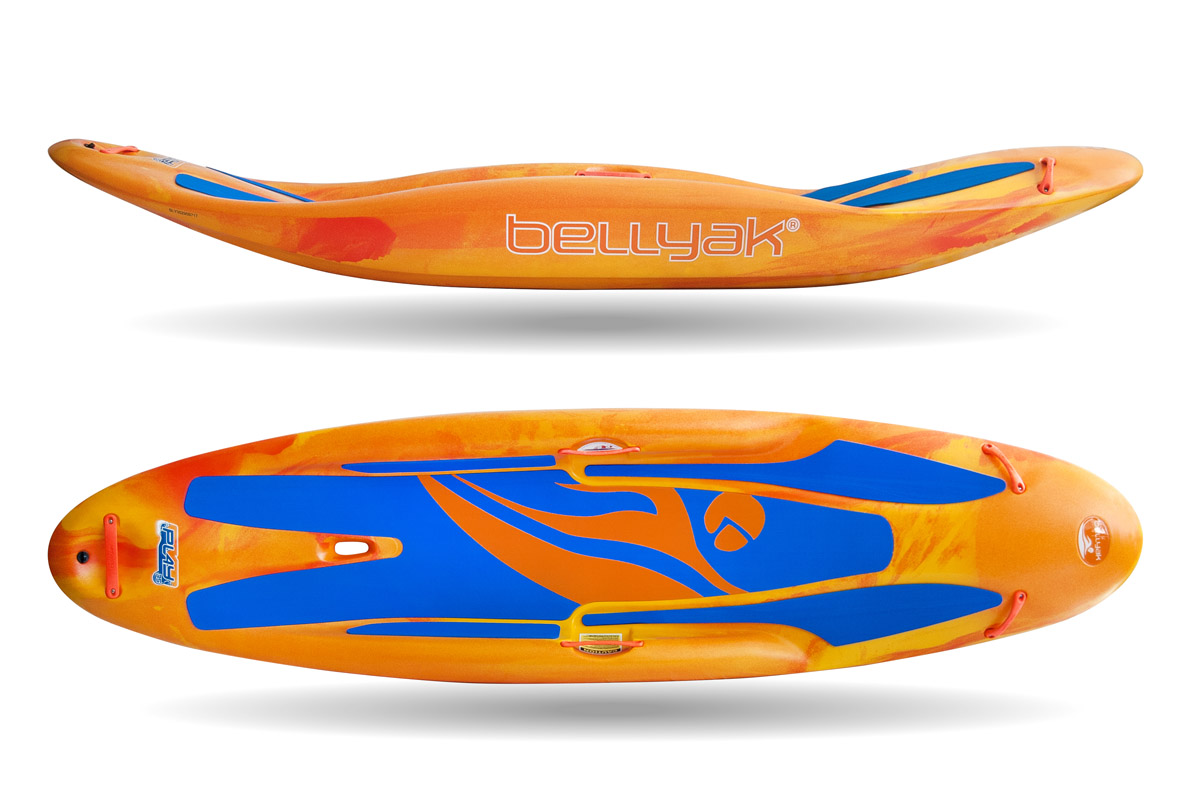
Bellyak Play 35 top and side view
Bellyak’s were born out of the need and desire to simplify and purify kayaking – to remove the paddle and the sprayskirt and use the modern evolution of hull design with webbed gloves to create an experience unlike any other. The design evolved from freestyle whitewater kayaks and are made to be as nimble and responsive as possible. This led to the Play series, which are 7’7″ long and have ample bow and stern rocker along with a planing hull. All bellyaks has a recessed body area for maximum comfort and ergonomics in whitewater. This also allows lateral stability and support required for the much more dynamic nature of whitewater.
The original bellyaks were built using whitewater kayaks as the base, developed to paddle prone. Learn more about it in our History of Bellyak.
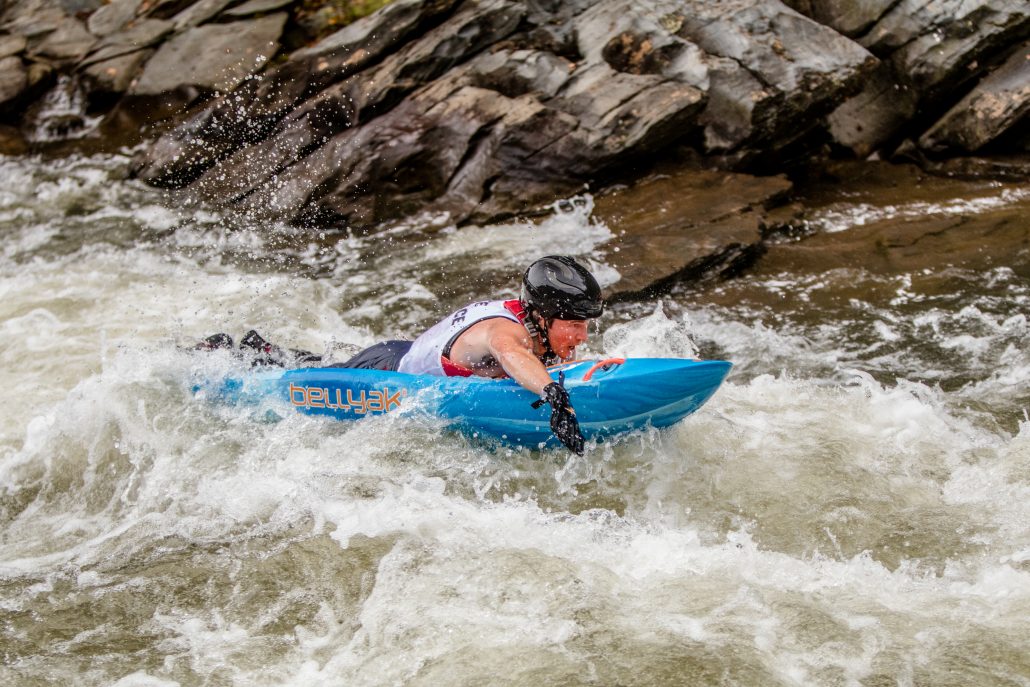
Prone Whitewater Racing on the Ocoee River
Which one is Right for me?
Both are right for you! If you love prone, that is. But here are some guidelines to help pick.
Where do you live?
- If you live on the ocean or a lake, or will only be using the board for flatwater, then get a traditional prone board. There are many great shapers out there. Joe Bark is a well known designer based in California, and on the east coast Cynthia Aguilar makes excellent prone boards.
- If you live near rivers, or travel from surf to mountains a lot – try a bellyak. The Frequency bellyak is a great place to start as its built in fin helps guide the boat where you want it to go.
Budget
- Prone boards start at $1200 and go up.
- Bellyaks start at $595 and go up to $729.
Speed vs. Maneuverability
- Traditional prone boards are light and fast, and primarily designed to go in a straight line. Since they are designed to be used on the open ocean, the long length provides maximum speed and glide for efficient paddling. Speed is a function of wetted waterline, so on anything other than whitewater, a prone board will be much faster.
- Bellyaks are made to have maximum maneuverability to be able to handle the demands of whitewater paddling. They have ample bow and stern rocker (the rise of the bow and stern in relation to the waterline) which allows quick transitions in the river and aids in the most fun of all prone river activities: Prone River Surfing.

No, I’m not trying to spawn, I’m surfing, thank you
Weight vs. Durability
- Prone paddleboards are fiberglass over foam construction, which is one of the lightest, most customizable ways to build a board. Surfboards have been made like this since the 60’s. It is the industry standard for construction of boards. This manufacturing technique makes a very light board for the size, but they are not as durable as rotomolded plastic. Extra care has to be taken to keep the board free from dings. Hitting rocks intentionally is out of the question!
- Bellyaks are rotationally molded out of high density polyethylene. The finished product weighs more than an equivilantly sized prone board, but the durability is second to none. This is the same way whitewater kayaks have been built since the late 1970’s, revolutionizing the sport. If you plan to hit rocks, or want a board/boat that can be used by anyone without worry, then a bellyak is for you.
Size and Storage
- Most prone boards are 10’6″ and longer, making storage and transport a little more challenging.
- The longest bellyak is 8’7″ and more easily fits in your gear closet or in/on top of your car.
Do you want to paddle in the river?
If you want to paddle whitewater prone, then you need a bellyak. Bellyak’s are designed to handle the dynamic nature of whitewater better than any prone craft out there. The history of whitewater kayak design has been distilled into the Bellyak. The Play 35 and Play 45 adopted the best features of the ‘slicey’ kayaks of the early 2000’s and combined them with our patented ‘body to boat interface‘ to create an incredibly intuitive and fun watercraft. If you want something to use at the lake or in the ocean and are more concerned with durability, price point, and versatility over pure speed, then the Frequency is perfect for you.
To PFD or not to PFD (personal flotation device)
According to the Coast Guard, vessels propelled by hands or feet without the use of engines, sails, oars, paddles, propellers (the rule gives the full list) are excepted from the USCG life jacket requirement as per rule 33 CFR 175.11 (CFR stands for Code of Federal Regulations. )
While the majority of traditional prone paddlers do not wear a PFD, we highly recommend the use of one. The Bellyak’s patented rider interface accommodates the extra bulk caused by a PFD, and since the intended use of the bellyak is on inland lakes and rivers, a PFD is a smart choice. Something you want to have but not need. We recommend the Astral Layla.
Gear Needed:
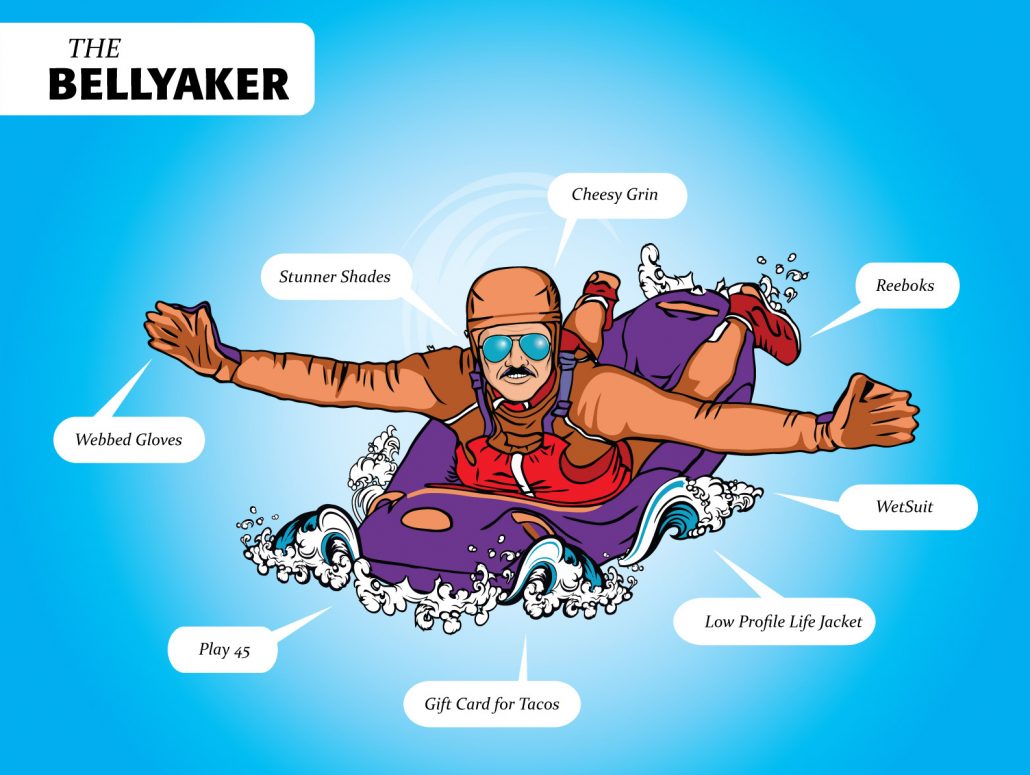
The beauty of prone paddling is you can go light on gear. For warmer temperatures, you only need your swimsuit (the addition of a rashguard helps maintain nipple integrity), and your board.
For bellyaking, the gear is a combination of surfing and kayaking. Wearing a PFD and a helmet are staples, and then any combination of shorts, wet suits – or dry suits in cooler temperatures – can happen. The biggest difference in gear, besides the design of the craft, is that bellyaker’s use webbed gloves for extra propulsion.
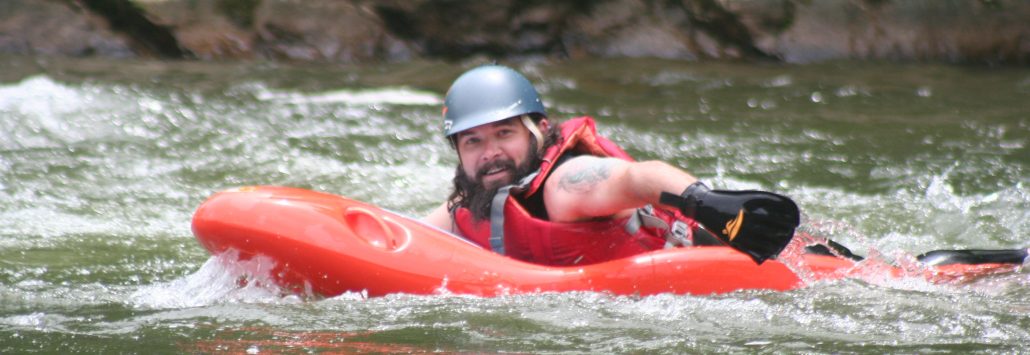
Webbed Gloves, PFD and Helmet are standard gear for prone river paddling
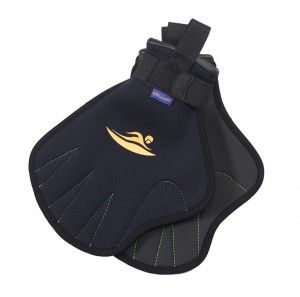
In Conclusion
Think of it this way: prone boards are like road bikes that excel at going fast on asphalt. Bellyaks are like mountain bikes. They work on the road but aren’t as efficient as a road bike. You can take a road bike offroad but it won’t handle as well as a mountain bike, and you are likely to break it.
If money isn’t an option? Own both. They will complement each other and give you the tools you need to explore all things prone and aquatic. Whatever you choose – Get out and go prone!
